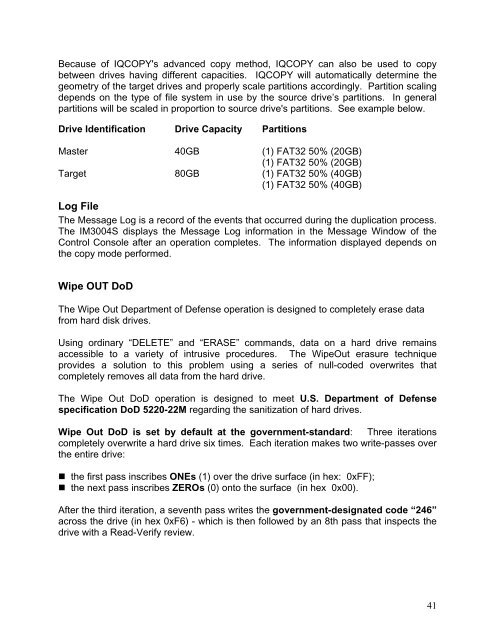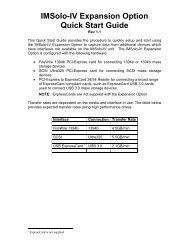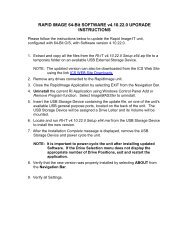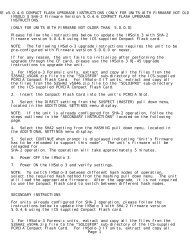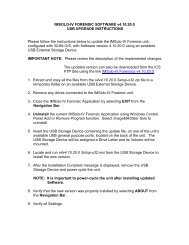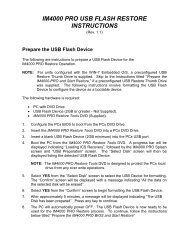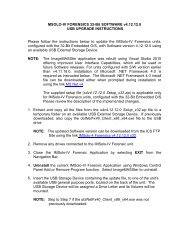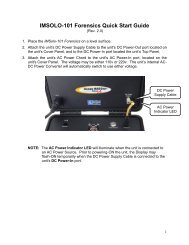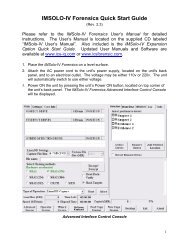IM3004s User Guide v2.2.pdf - ICS-IQ.com
IM3004s User Guide v2.2.pdf - ICS-IQ.com
IM3004s User Guide v2.2.pdf - ICS-IQ.com
You also want an ePaper? Increase the reach of your titles
YUMPU automatically turns print PDFs into web optimized ePapers that Google loves.
Because of <strong>IQ</strong>COPY's advanced copy method, <strong>IQ</strong>COPY can also be used to copybetween drives having different capacities. <strong>IQ</strong>COPY will automatically determine thegeometry of the target drives and properly scale partitions accordingly. Partition scalingdepends on the type of file system in use by the source drive’s partitions. In generalpartitions will be scaled in proportion to source drive's partitions. See example below.Drive Identification Drive Capacity PartitionsMaster 40GB (1) FAT32 50% (20GB)(1) FAT32 50% (20GB)Target 80GB (1) FAT32 50% (40GB)(1) FAT32 50% (40GB)Log FileThe Message Log is a record of the events that occurred during the duplication process.The IM3004S displays the Message Log information in the Message Window of theControl Console after an operation <strong>com</strong>pletes. The information displayed depends onthe copy mode performed.Wipe OUT DoDThe Wipe Out Department of Defense operation is designed to <strong>com</strong>pletely erase datafrom hard disk drives.Using ordinary “DELETE” and “ERASE” <strong>com</strong>mands, data on a hard drive remainsaccessible to a variety of intrusive procedures. The WipeOut erasure techniqueprovides a solution to this problem using a series of null-coded overwrites that<strong>com</strong>pletely removes all data from the hard drive.The Wipe Out DoD operation is designed to meet U.S. Department of Defensespecification DoD 5220-22M regarding the sanitization of hard drives.Wipe Out DoD is set by default at the government-standard: Three iterations<strong>com</strong>pletely overwrite a hard drive six times. Each iteration makes two write-passes overthe entire drive:• the first pass inscribes ONEs (1) over the drive surface (in hex: 0xFF);• the next pass inscribes ZEROs (0) onto the surface (in hex 0x00).After the third iteration, a seventh pass writes the government-designated code “246”across the drive (in hex 0xF6) - which is then followed by an 8th pass that inspects thedrive with a Read-Verify review.41


